
Birding Around Las Vegas, Favorite Places Far Away

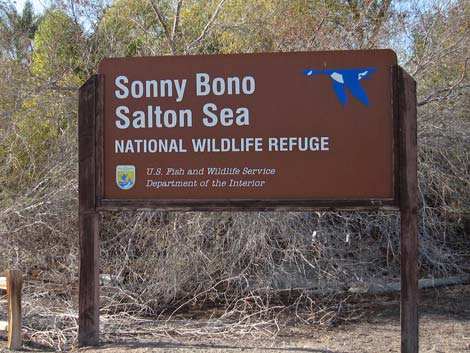 |
Description Located on the southeast corner of the Salton Sea, the Wildlife Refuge includes several habitat types with birds specific to each. Refuge Headquarters has mesquite thickets with water and seed feeders, making it the best place to see ground-doves, quail, and other seed-eating species. The shoreline includes mud flats with wading birds and seawalls with divers. Specially designed and protected islands provide habitat for Least Terns. Refuge Unit One, located at the south tip of the sea, provides freshwater marshes where ducks, geese, and shorebirds can be abundant. Always watch for Burrowing Owls when in these areas. |
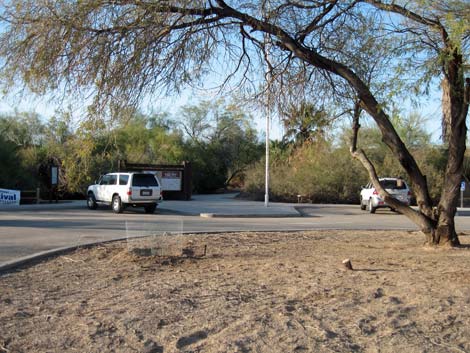 |
Location The Salton Sea is located in the low deserts of southeastern California. Access from the north is via Interstate 10, and access from the south is from Interstate 8. The National Wildlife Refuge headquarters is located at the southeast corner of the Salton Sea between the town of Niland and Calipatria. From Highway 111, which runs along the east side of the Salton Sea, watch for signs and turn west on Sinclair Road, which runs right into refuge headquarters (northwest corner of Sinclair and Gentry Roads). Link to Area Map or Google Site Map. |
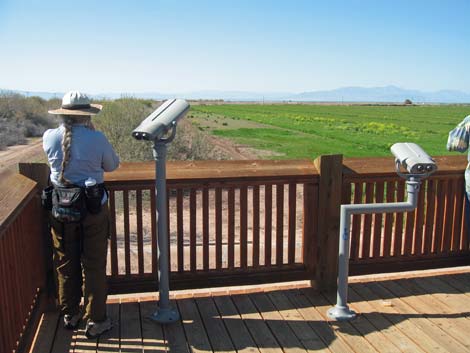 |
Amenities The birdwatching areas at the Salton Sea are located in wild desert and rural farming country with few amenities in the immediate vicinity. The cities of Brawley and El Centro to the south provide everything. Smaller towns provide essential services. The headquarters building has rest rooms and picnic tables. |
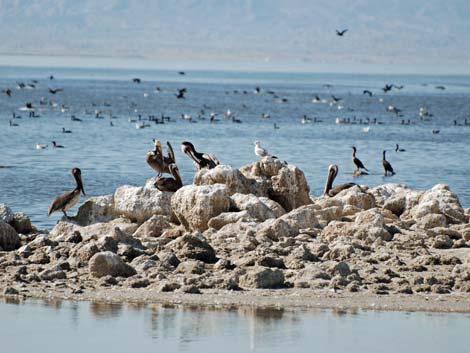 |
Hours Day-use in the Headquarters area; always open elsewhere, but consider them to be day-use only. Fees None. |
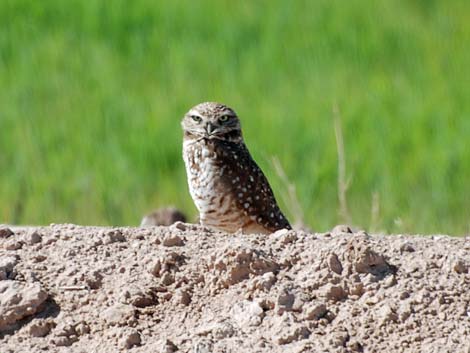 |
Specialties The Refuge bird list sports some 400 species (including 93 nesting species), plus they list 41 species of mammals, 18 species of reptiles, 4 species of amphibians, and 15 species of fish. The refuge provides critical wintering and migration stopover habitat for over 400 species of birds, including some 30,000 geese (Snow Geese, Ross's Geese, and Canada Geese), and 60,000 ducks during November through February. Endangered species observed on the refuge include Bald Eagles, Peregrine Falcons, Brown Pelicans, Yuma Clapper Rails, and Desert Pupfish. Sensitive species on the refuge include Fulvous Whistling-Ducks, Wood Storks, Long-billed Curlews, Mountain Plovers, Snowy Plovers, Burrowing Owls, Least Terns, and White-faced Ibis. Watch for feral Flamingos too! |
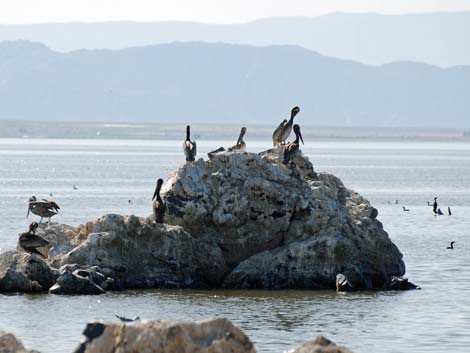 |
The Salton Sea supports lots of specialty birds, but it is a great place to see vast numbers of Eared Grebes and Brown Pelicans, and it is a good place to see Burrowing Owls and Common Ground Doves. Keep an eye out for Blue-footed Boobies, Yellow-footed Gulls, and other oddities. For More Information Visit the Sonny Bono Refuge website. There are lots of online resources (google Salton Sea bird watching). |
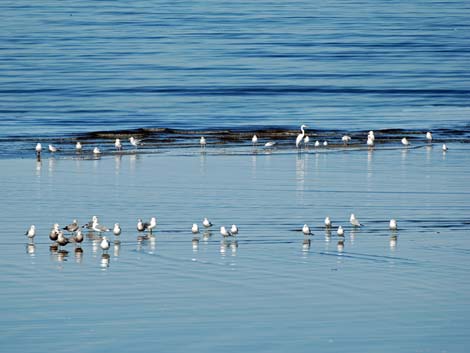 Shoreline area |
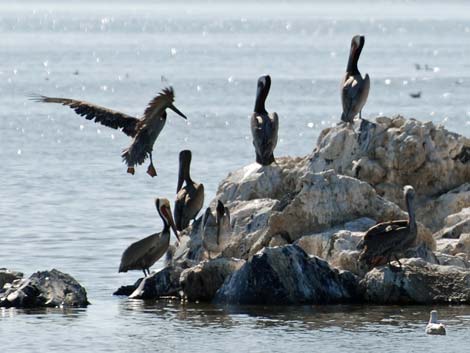 Obsidian Butte area |
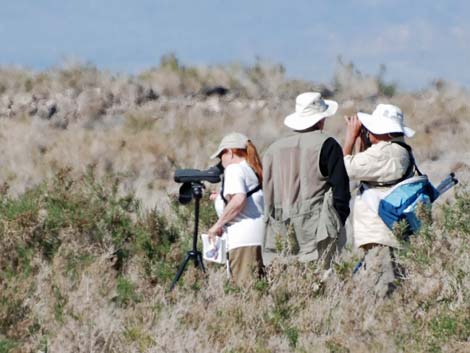 Obsidian Butte area |
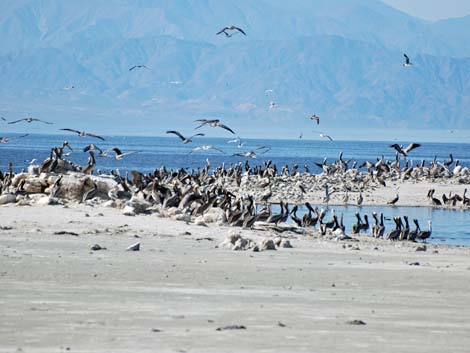 Obsidian Butte area |
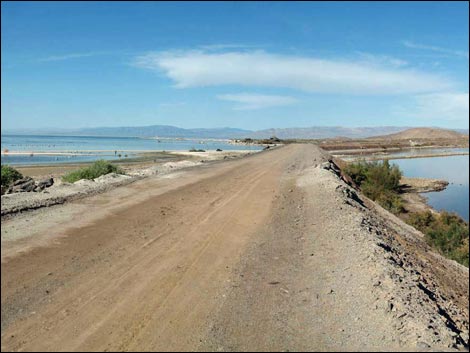 Dike access to Obsidian Butte (ahead in distance) |
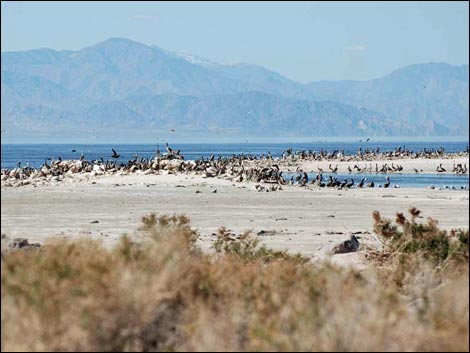 Obsidian Butte area |
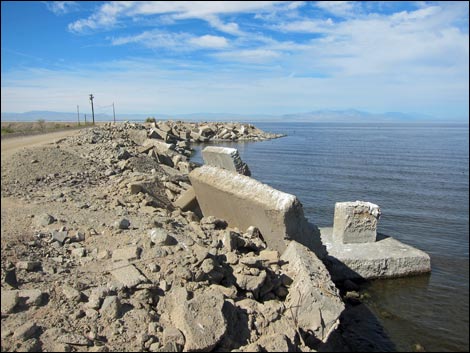 North-facing seawall area (view W) |
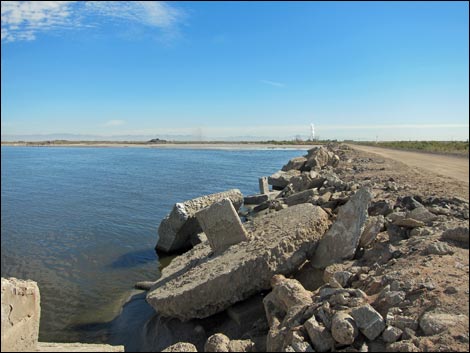 North-facing seawall area (view E) |
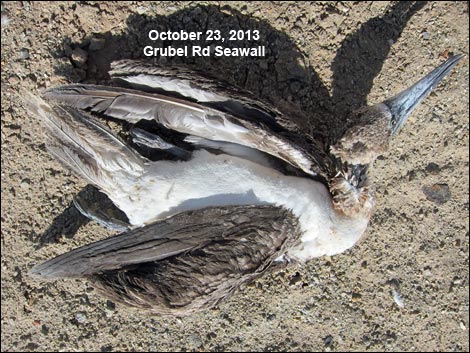 Dead Blue-footed Booby in Seawall area |
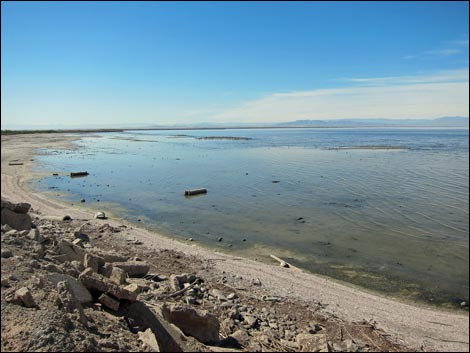 Beach off west-facing seawall area |
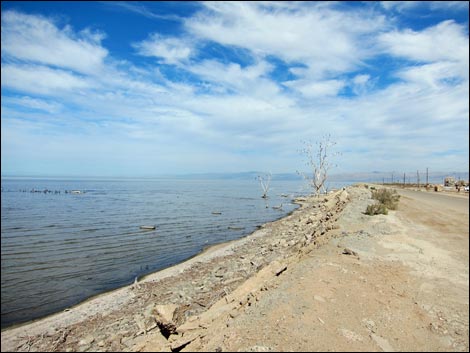 West-facing seawall area |
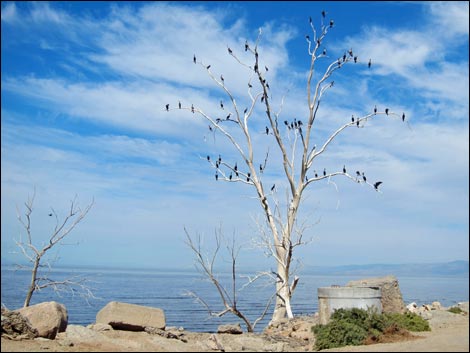 Double-crested Cormorant tree along the west-facing seawall |
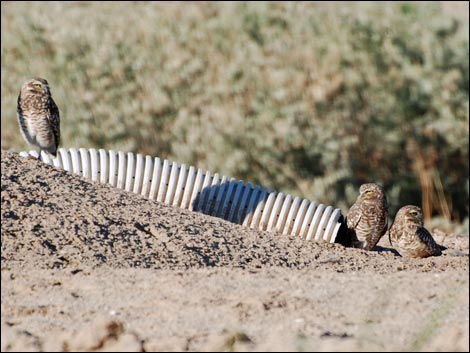 Burrowing Owls at artificial burrow |
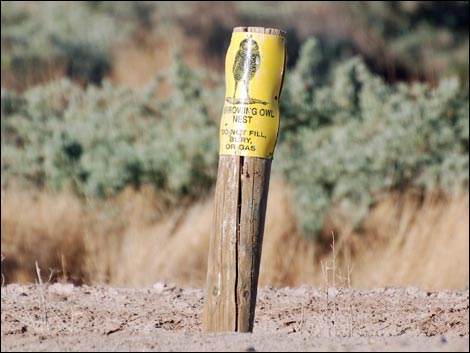 Keep an eye out for artificial burrow markers |
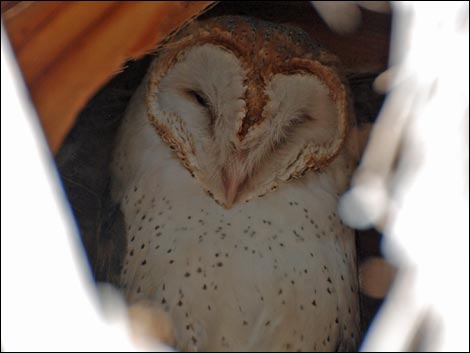 Barn Owl trying to sleep in palm tree at refuge headquarters |
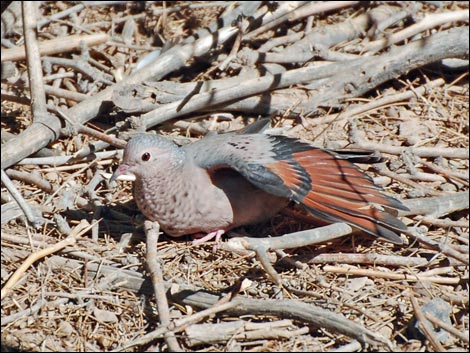 Common Ground-Dove at refuge headquarters |
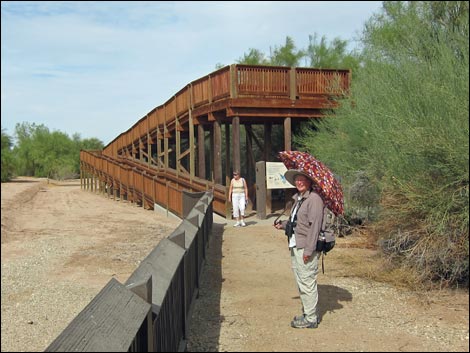 Start of Rock Hill Trail below viewing platform at refuge HQ |
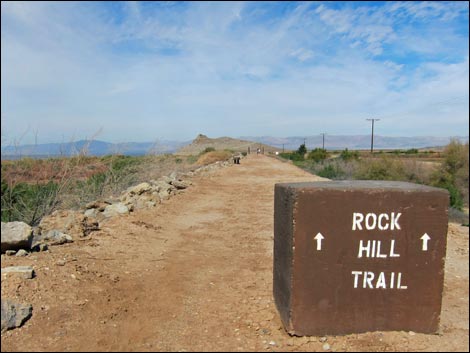 Rock Hill Trail trail sign |
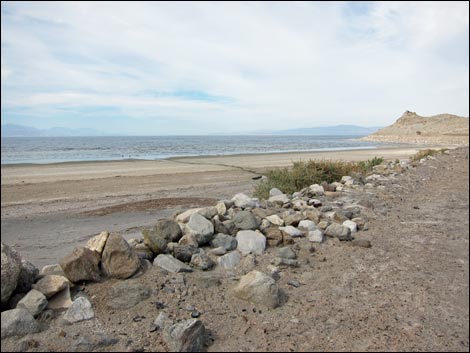 Rock Hill Beach (view NW) |
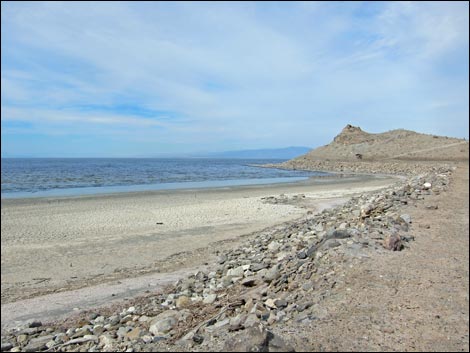 Rock Hill Beach (view NW) |
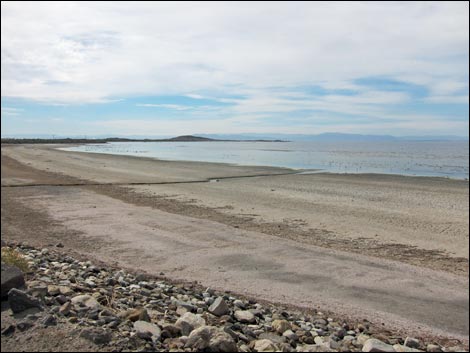 Rock Hill Beach (view SW) |
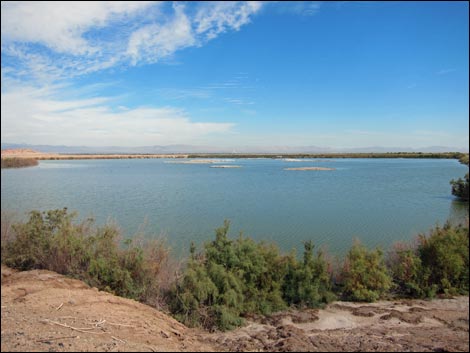 Tern nesting pond (view NE) |
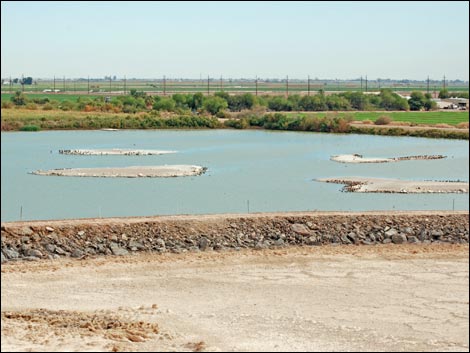 California Least Tern breeding islands |
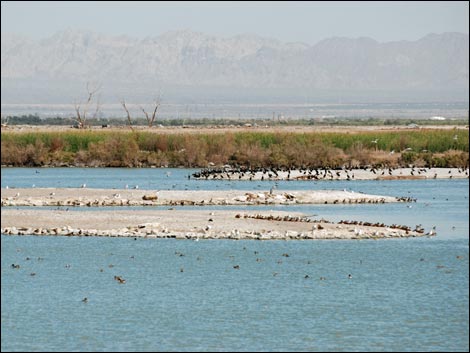 California Least Tern breeding islands in protected pond |
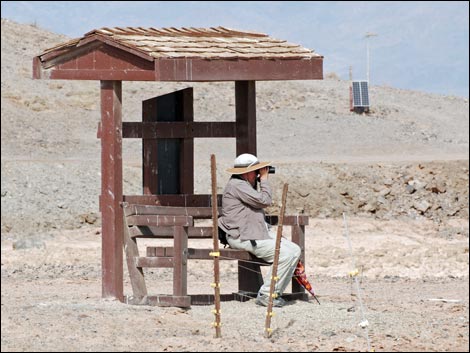 Birder looking for California Least Terns |
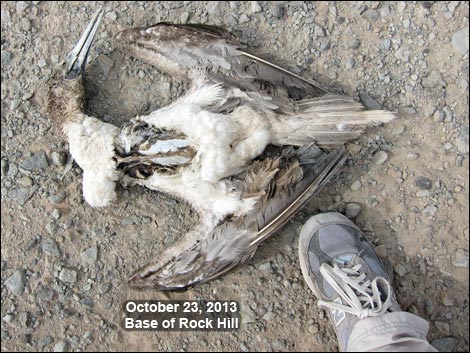 Dead Blue-footed Booby at the base of Rock Hill |
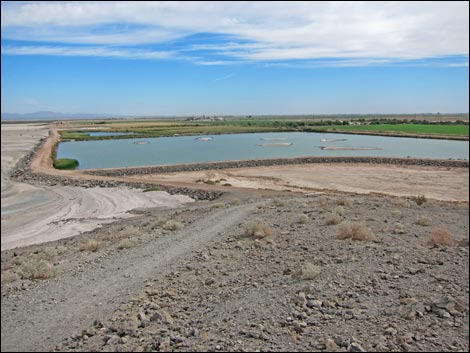 Least Tern breeding pond and islands (view SE from Rock Hill) |
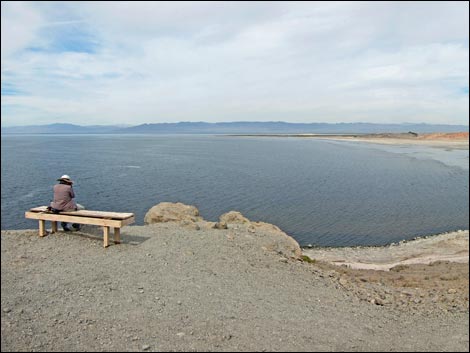 Birding from atop Rock Hill (view N) |
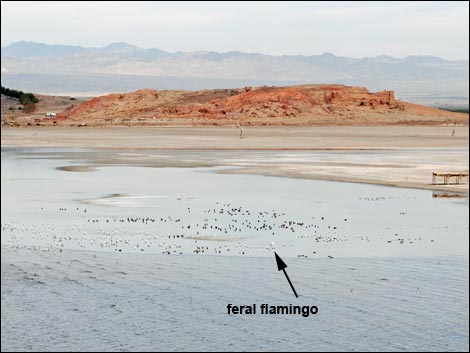 Mixed bird on mud flats (view N from Rock Hill to Red Bluff) |
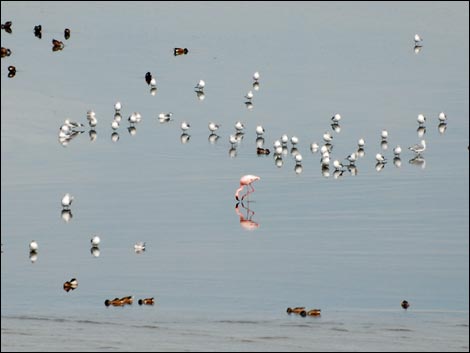 Feral flamingo (view N from Rock Hill) |
Happy birding! All distances, elevations, and other facts are approximate.
![]() ; Last updated 210726
; Last updated 210726
| Salton Sea | Birding Around Las Vegas | Glossary | Copyright, Conditions, Disclaimer | Home |